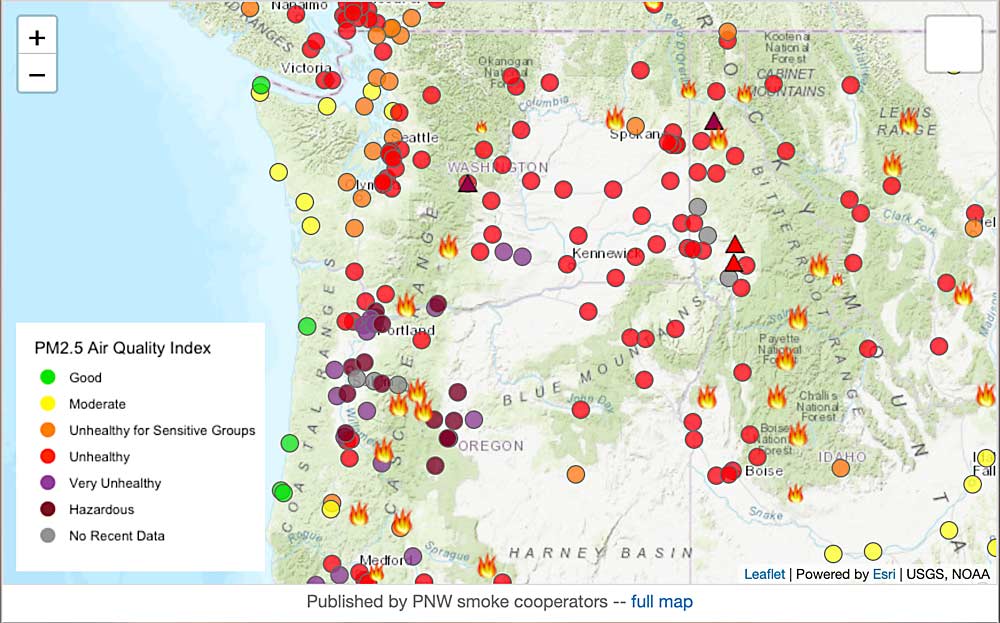
The wildfire smoke conditions across the West Coast pose a serious threat to human health, but the threat to wine grapes may not be as severe as many in the industry fear while looking at maps blaring red and purple levels of hazardous air quality.
That’s because the smoke particles that pose the greatest risk to grapes — altering flavors so that wines end up unpleasantly ashy — are not what’s measured by the human-health-focused air quality monitors, according to Tom Collins, a Washington State University professor who has been studying smoke impacts to grapes since 2016.
During a webinar hosted by WSU, the Washington Wine Commission and the Washington Winegrowers Association, Collins shared data from the air quality monitors he uses specifically for smoke research that target a smaller particle size than the standard, human-health-focused air quality monitors. Even on the worst days in recent smoke events, the average exposure levels only reached about 20 percent of the levels he uses in experiments to recreate smoke taint to research.
“There’s general consensus that as smoke travels, it loses its potency to create these off aromas and flavors,” he said.
Vineyards with a fire burning nearby seem to have a greater risk from immediate smoke, with less duration, than he expects to see from a prolonged smoke event blown in from regional wildfires.
Still, growers and winemakers have concerns. Collins suggested they do a microfermentation in a bucket to see if a sensory evaluation of the resulting wine can detect smoke impacts. For details, see the resources from the industry’s West Coast Smoke Exposure Task Force posted online: https://www.washingtonwine.org/research/reports/details/smoke-exposure-micro-fermentation-protocol
“We’re still in a situation where analytical results from a lab are unlikely to be available when you need them to make picking decisions,” he said. “We think bucket fermentations are a great tool for getting through this; it’s really designed to help you get to the worst-case scenario.”
Those lab analysis results will still be necessary to make crop insurance claims down the road, however.
Even with lab results, Collins and other researchers who study smoke say it’s hard to get a clear picture of how the wine will taste. Smoke effects are complicated by variety, timing of exposure, duration of exposure, distance from the fire, fuel source of the fire and other factors.
Collins and a team of researchers from Oregon and California are working to better understand what levels of exposure result in wine impacts in key varieties and hopefully provide a better framework to predict impacts during future smoke events.
—by Kate Prengaman






Leave A Comment